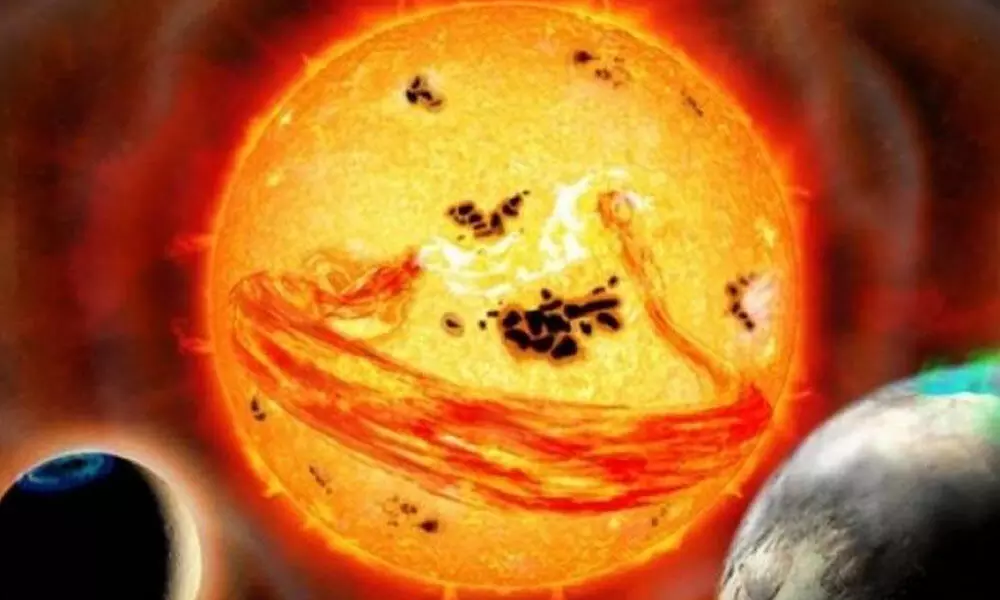Sun-like star explosion with dangerous flares is a warning for the Earth

Sun-like star explosion with dangerous flares is a warning for the Earth
The scientists studied the coronal mass ejection of a star, which is also seen in our Sun. This massive ejection of particles triggers solar storms.
A star more than 100 light-years away in the constellation Draco is teaching us some disturbing things about Sun. The star, EK Draconis, recently surprised researchers when it launched into an explosive light show more energetic than anything observed from our local star. If our Sun were to erupt in the same way, it would be bad news for our power grids and satellites.
EK Draconis is about the same mass as the Sun but is much younger, at about 100 million years (compared to the Sun's 4.6 billion years of life). Like stars, these objects are made of superheated gas. Sometimes the plasma can fall back to the solar surface and light up in what is called a solar flare. Those flares may be small, like the tiny "bonfires" on Sun that were first observed by NASA's Solar Orbiter last year, but sometimes these energy arcs can be much larger.
Overheated material can be ejected into space in what is called a coronal mass ejection. A team of researchers studying EK Draconis recently saw the star spewing plasma in an explosion 10 times larger than any previously observed in a sun-like star. These results were published today in Nature Astronomy.
"The results help us to improve understanding on how coronal large mass ejections have occurred over the 4.6-billion-year history of Sun-sized stars and our Sun itself," said study co-author Yuta Notsu, an astrophysicist at UC Boulder and the National Solar Observatory, in an email to Gizmodo. "Although such big super CMEs occurred much more frequently at a younger age, this event can be a proxy for the possible super CMEs associated with possible superflares once every hundred or thousand years on our current Sun."
So maybe one day our Sun can launch an equally large coronal mass ejection. Even the slightest solar flares we experience are enough impositions; When headed for Earth, the phenomena can alter the electronics and orbits of satellites. A coronal mass ejection of significant size could completely fry those satellites and destroy entire electrical grids.
Notsu's team observed EK Draconis for 32 nights in 2020 using NASA's TESS satellite, which normally searches for new exoplanets, and the SEMEI Telescope at the University of Kyoto in Japan. One night in April, they saw the spectacular: the star released a huge flare, followed about half an hour later by the early stages of a coronal mass ejection. In that stage, called a filament eruption, plasma shot out of the star at about 1 million miles per hour.
Notsu said the team has so far only observed that initial phase of a coronal mass ejection; To see the later stages, they would have to look at EK Draconis at different wavelengths using ultraviolet and X-ray telescopes.

















